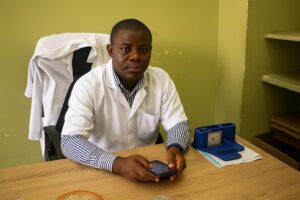Emergency wards receive vital equipment
Early Tuesday afternoon in Brazzaville, flashes of camera bulbs bounced off a convoy of crates marked with the blue WHO emblem as they rolled into the courtyard of the Ministry of Health and Population. Inside lay devices able to tip the balance between life and death.
The regional office of the World Health Organization for Africa officially handed over the shipment, valued at nearly 280 million CFA francs, to Health Minister Professor Jean Rosaire Ibara. The gesture aims to reinforce emergency rooms across public hospitals before the next surge of respiratory cases.
On site, doctors in white coats quietly examined ventilators, oxygen concentrators, patient monitors, and state-of-the-art intensive-care beds. For many, the arrival felt like a turning point after three demanding years marked by COVID-19 waves, seasonal flu spikes, and routine trauma that strains the limited critical-care network.
Professor Mohamed Yakub Janabi, WHO Regional Director for Africa, insisted that preparedness cannot wait for headlines. “Every day brings emergencies,” he reminded the audience, noting that heart failure, road accidents and asthma attacks keep clinicians on constant alert even outside the glare of epidemic outbreaks.
The newly delivered equipment, built to international standards and equipped with replaceable filters and spare parts, is expected to circulate quickly to referral hospitals in Brazzaville, Pointe-Noire, Owando, and Dolisie. Technicians from the health ministry were already labeling pallets for dispatch as speeches wrapped up.
Inside the CFA 280 million package
According to Dr Vincent Dossou Sodjinou, WHO Representative in Congo, each ventilator can deliver precisely titrated oxygen flows, reducing the risk of barotrauma for fragile lungs. The concentrators, meanwhile, extract medical-grade oxygen from ambient air, a major advantage for facilities far from central gas plants.
Also included are multi-parameter monitors that track heart rate, blood pressure, oxygen saturation and temperature on a single high-definition screen. Nurses told us that having all metrics in one glance saves precious seconds when a patient suddenly desaturates or slips into arrhythmia during night shifts.
Five electrically adjustable ICU beds round out the consignment. With built-in CPR modes and side rails, they will replace aging furniture that often forces caregivers to improvise. “A stable bed angle prevents fluid backflow and secondary infections,” explained senior nurse Prisca Mvoula as she tested the controls.
A resilient Congo-WHO partnership
WHO officials underlined that the donation is part of a multi-year plan signed with the Congolese government in 2021 to strengthen primary care, disease surveillance and emergency response. The roadmap has already supported vaccination campaigns, cold-chain upgrades and in-service training for rural health workers.
Professor Janabi praised Congo’s steady investments in community clinics and urban health centers, describing them as “the first line of defense” that filters cases before they overcrowd tertiary hospitals. He highlighted recent refurbishments in Ouesso and Impfondo as examples of a balanced approach between prevention and cure.
Health Minister Ibara echoed the sentiment, stressing that the government is finalising two modern hospitals—one in the north and another in the south—that will open their doors in the coming weeks. “These machines arrive just in time to equip the new emergency wings,” he said.
Expected impact on patients and families
In the paediatric ward of the Brazzaville University Hospital, Dr Stella Nguesso recalled nights when only one functioning ventilator had to be rotated among three distressed children. “Parents looked at us with panic we could not erase,” she remembered. “Additional units will spare families that anguish.”
The Congolese Thoracic Society estimates that severe asthma attacks rise by up to 30 percent during the current dusty season. Combined with traffic accidents on National Road 1, emergency teams often juggle simultaneous respiratory and trauma cases. Better monitoring tools, doctors say, help triage patients faster and cut mortality.
Outside the ministry courtyard, Emmanuel Bosso, a ride-hailing driver waiting for a fare, stopped to watch the unloading. He lost his cousin to a road accident last year and believes equipment can make a difference. “Ambulances arrive, but the real fight is at the hospital,” he reflected.
Training and next steps for hospitals
Technical teams from WHO and the ministry will run a three-day workshop this week to train biomedical engineers and nurses on calibration, maintenance and safe use. Manuals in French and Lingala accompany each device to ensure continuity once international experts return to their duty stations.
Regular audits will track uptime, supplies and patient outcomes over the next 12 months. Findings will feed into the national health information system, guiding future procurement. For now, however, the crates rolling out of Brazzaville carry something less tangible but deeply felt: a fresh dose of public confidence.
Minister Ibara closed the ceremony by thanking President Denis Sassou Nguesso for prioritising health financing in the national budget. He told reporters that additional negotiations with multilateral partners are underway to modernise laboratory diagnostics and digital record systems, ensuring that the new machines fully fit into a broader, smarter care network.






















